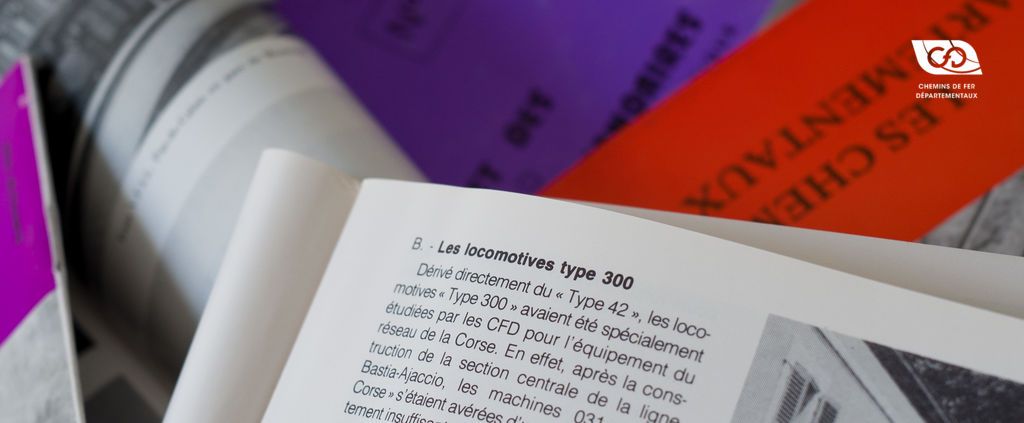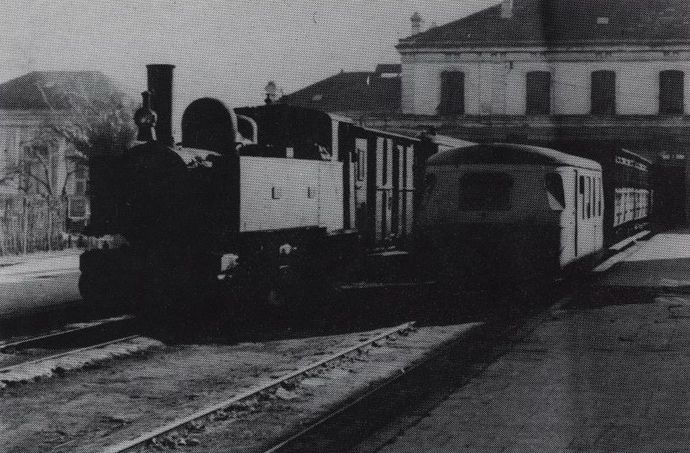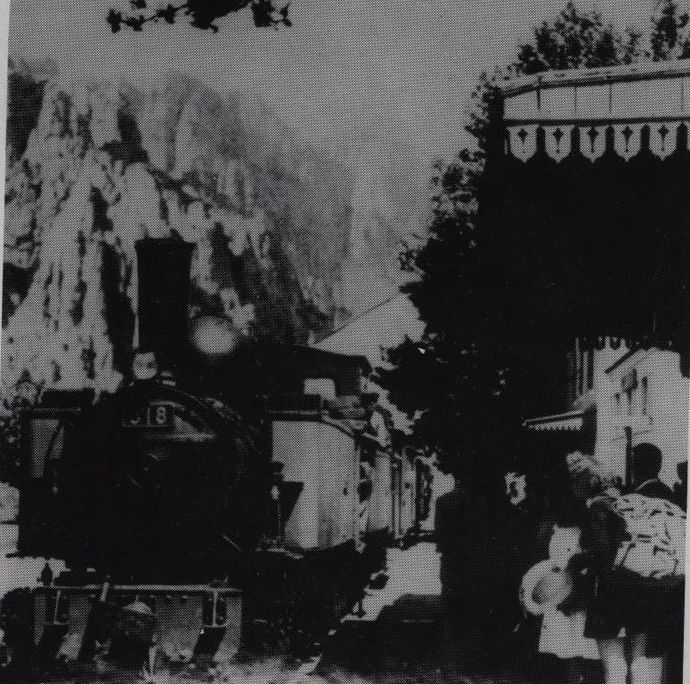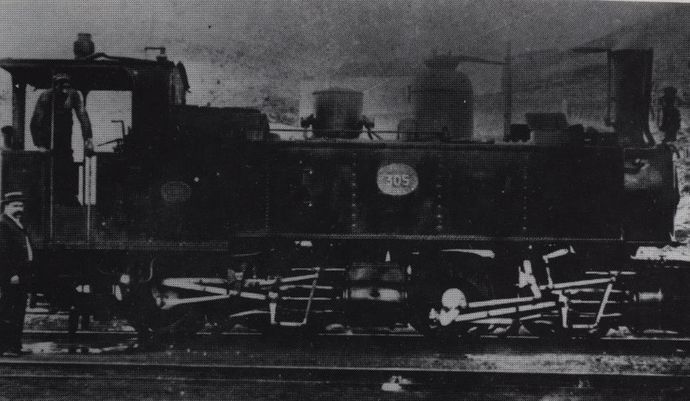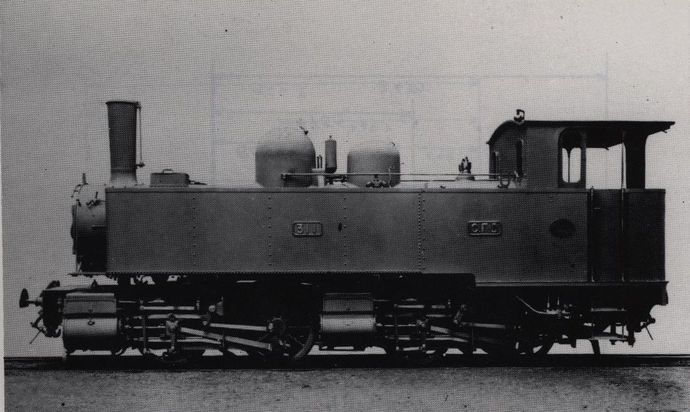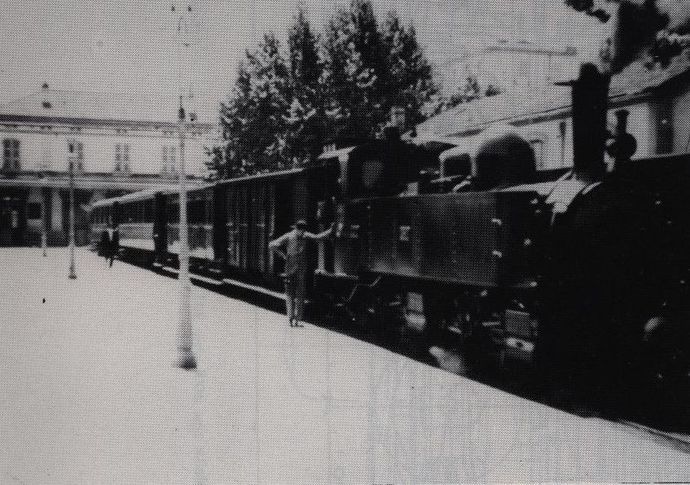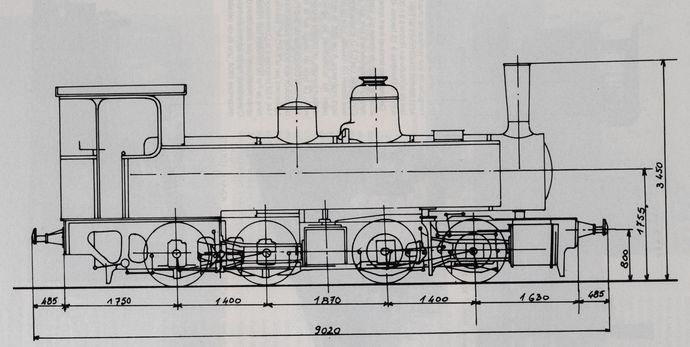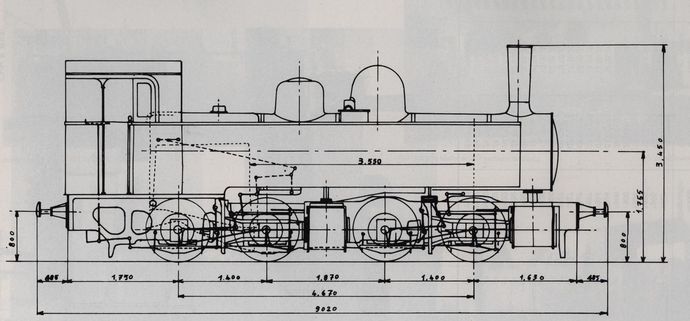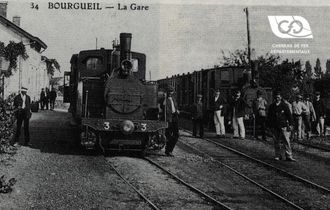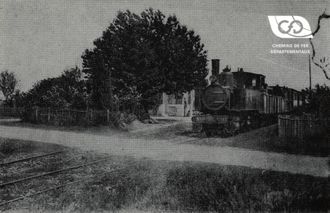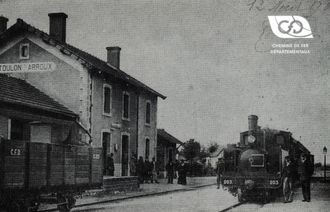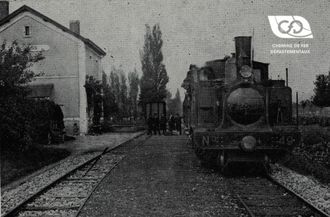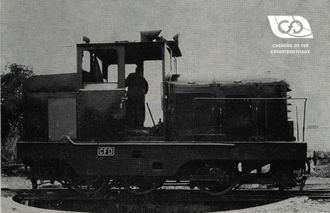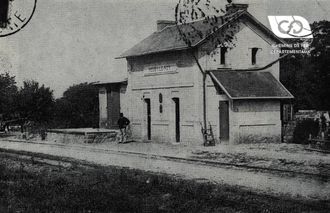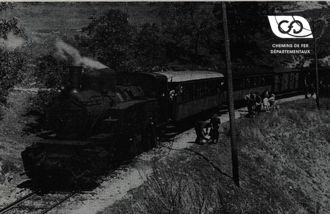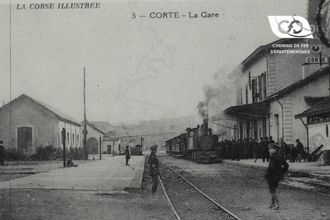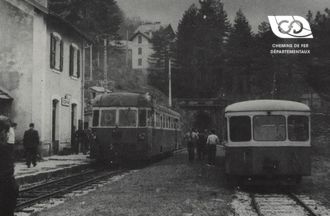Satisfied with the performance of its Compound locomotives on the Vivarais lines, roughly comparable to those of Corsica, the Company had decided to improve them in order to use this new model on the latter network. To this end, it ordered a prototype from the S.A.C.M., in 1891, with characteristics more adapted to the Ile de Beauté network.
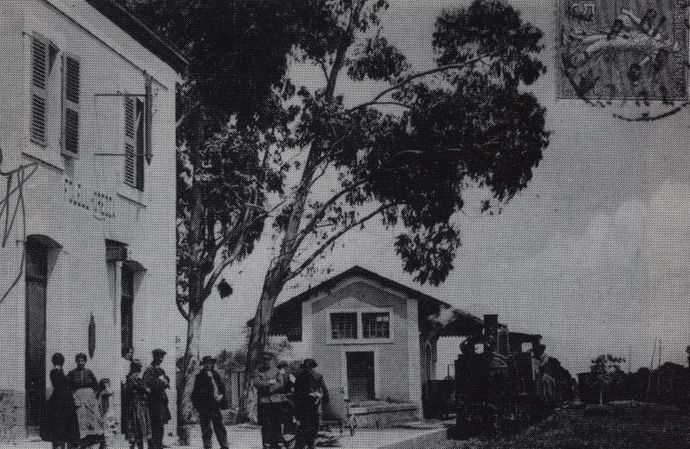
Description of locomotive type 300
Equipped with a more generously dimensioned boiler in order to increase its steaming power by increasing the number and length of the tubes, bringing the total heating surface from 46.49 m to 67.90 m2, this prototype was equipped with more generously dimensioned cylinders. The diameter of the wheels was increased to 1.01 m, enabling it to reach higher speeds.
As a result of the modification of these various elements, as well as the increase in the capacity of the water and fuel tanks, this machine was given a longer wheelbase, length and weight.
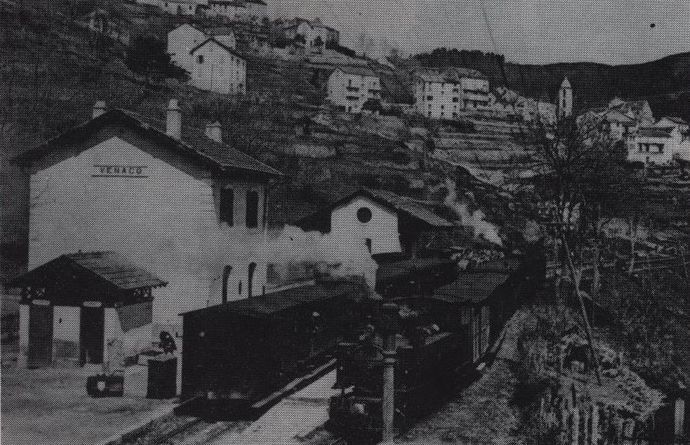
The shelter, which was semi-open, was pierced by two rectangular portholes without a visor, and the roof was supported by two side columns and a small sheet metal plate placed in the middle of the stern face.
Two side railings were attached to the front of the boiler, as well as a handrail on the upper part of the smoke box, which had a round door.




